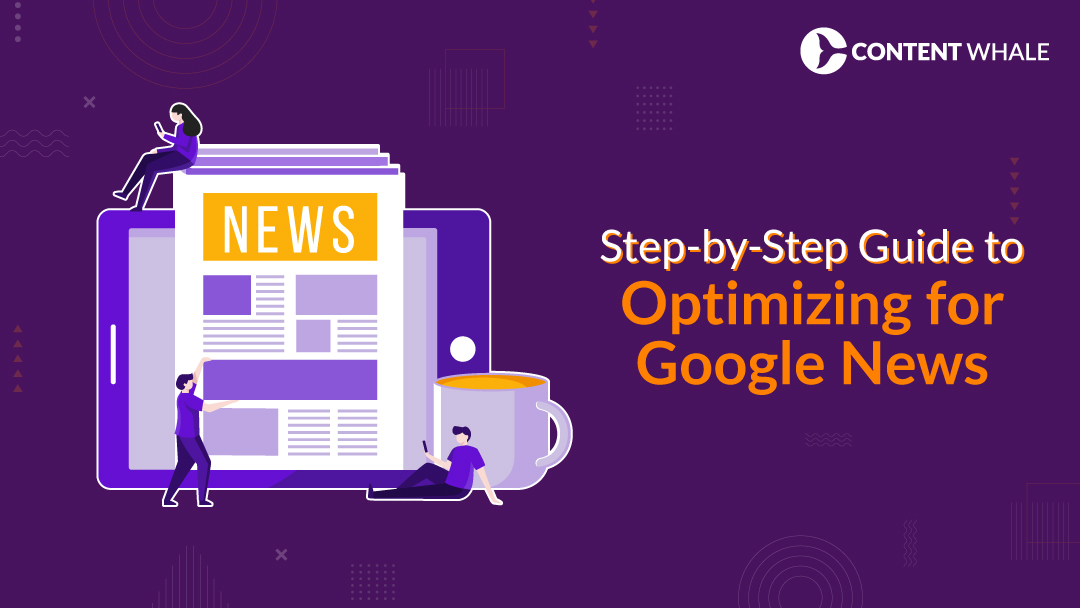Recent studies underscore the immense influence that well-structured ecommerce category pages can have on a site’s organic traffic. One compelling statistic to consider is that effectively optimized ecommerce category pages may drive up to 70% of a site’s organic visits. This figure highlights the critical role these pages play not only in attracting visitors but also in guiding them through the shopping experience from initial interest to final purchase.
Understanding Ecommerce Category Pages
Ecommerce category pages are essentially the backbone of any e-commerce website, acting as the primary hubs that organize products into navigable groups. These pages facilitate a smoother buyer journey by categorically dividing products, making it easier for users to find exactly what they’re looking for. More than just product listings, these pages enhance user engagement through strategic layout and targeted content.
The Benefits of Optimizing Ecommerce Category Pages
Optimizing ecommerce category pages is pivotal for several reasons. Firstly, it significantly boosts your site’s visibility, making your products more discoverable via search engines. This optimization leads to higher organic traffic. Additionally, well-optimized pages improve conversion rates by providing a user-friendly shopping experience that encourages visitors to make a purchase. Lastly, these pages play a vital role in building and reinforcing brand awareness, positioning your offerings more prominently in the competitive online marketplace.
By integrating key practices in ecommerce SEO, such as using strategic keywords and enhancing page functionalities, businesses can effectively optimize category pages to meet user needs and search engine criteria. This approach not only improves user experience but also amplifies the visibility of your products across digital platforms.
As we delve deeper into the specifics of how to optimize category pages for e-commerce, it’s important to remember that the goal is to create a seamless connection between your products and potential customers through strategic optimization techniques. This process involves a detailed understanding of both SEO ecommerce pages and user experience design to ensure that all elements of your category pages are aligned with both SEO best practices and customer expectations.
What Makes a Great Ecommerce Category Page?

A superbly optimized ecommerce category page does more than just list products; it enhances user experience (UX) and maximizes ecommerce SEO impact. Here are the crucial aspects that contribute to the effectiveness of these pages.
1. User Experience (UX) Optimization
Clear and Concise Navigation:
Easy navigation is essential for guiding visitors through your product offerings without confusion. Ecommerce category pages should feature intuitive layouts that help customers find desired products swiftly and effortlessly. This includes logical categorization and visible labels that resonate with the user’s search intent.
User-Friendly Filtering and Sorting Options:
Customers appreciate the ability to filter and sort products according to their preferences, such as price, popularity, or new arrivals. Providing these options enhances the shopping experience and aids in quickly locating the most relevant products, thereby optimizing category pages for better user engagement and satisfaction.
High-Quality Visuals:
Product images and videos play a pivotal role in purchase decisions. High-resolution visuals that offer multiple views and zooming capabilities can significantly enhance product attractiveness. Including well-produced videos that showcase key features or use-cases can further influence buyer behavior positively.
Mobile Responsiveness:
Given the increasing prevalence of mobile shopping, ensuring that your ecommerce category pages are fully responsive is crucial. A seamless mobile experience supports not just accessibility but also impacts SEO rankings directly, as search engines favor mobile-friendly sites.
Internal Linking:
Strategically linking to related product pages and relevant content such as blog posts or buying guides can significantly boost your SEO for category pages. This practice enhances the user’s journey across your site and increases the likelihood of conversion by keeping users engaged with your content longer.
2. Content Strategy
Engaging Category Descriptions:
Craft compelling descriptions for your ecommerce category pages that do more than just incorporate keywords. These descriptions should inform and persuade by highlighting the benefits and unique features of the category, thereby making the case for why a visitor should explore the products listed.
Accessibility and Readability:
Using bullet points, numbered lists, and short paragraphs makes the content more accessible and easier to digest. Clear headings and subheadings should guide the reader through the page, improving their overall experience and interaction with the site.
Effective Calls to Action (CTAs):
CTAs are vital in guiding users towards the next steps, whether that’s making a purchase, learning more about a product, or viewing related items. These should be prominently placed and worded in a way that compels action, contributing directly to higher engagement and conversion rates.
By mastering these elements, businesses can effectively optimize category pages to not only meet but exceed user expectations, thus driving more traffic and increasing sales. Each component, from UX to content strategy, plays a specific role in enhancing the overall effectiveness of ecommerce category pages. In the next section, we will delve into the technical SEO considerations that are just as vital in optimizing these pages for search engines as they are for improving user experience.
In-Depth Guide to Ecommerce Category Page Optimization

To maximize the potential of ecommerce category pages, focusing on both keyword strategies and technical SEO elements is essential. These aspects ensure that the pages are not only user-friendly but also optimized for search engine algorithms.
1. Keyword Research and Targeting
The Significance of Keyword Research:
Effective keyword research is the cornerstone of ecommerce SEO. Identifying the right keywords involves understanding what potential customers are searching for and how competitive these terms are. This process is vital for connecting user queries with your products, ensuring that your ecommerce category pages appear in relevant search results.
Methods for Identifying Relevant Keywords:
Utilizing tools like Google Keyword Planner, Ahrefs, or SEMrush can provide insights into search volumes, competition levels, and the intent behind the keywords. This data helps in selecting the most advantageous keywords to target, which are crucial for driving relevant traffic to your ecommerce category pages.
Integration of Keywords:
Once the right keywords are identified, integrating them naturally into your category pages’ content, titles, meta descriptions, and URLs can significantly enhance their visibility and relevance in search results. Remember to use both primary and secondary keywords throughout the content to cover various search intents related to your products.
2. Technical SEO Considerations
URL Structure:
A well-organized URL structure is fundamental in SEO for category pages. URLs should be straightforward, include relevant keywords, and reflect the site’s hierarchy. This clarity not only helps search engines crawl and index your pages more effectively but also improves user understanding and navigation.
Page Speed Optimization:
Page speed is a critical factor in both user experience and SEO. Faster loading times reduce bounce rates and improve overall engagement. Techniques to enhance page speed include optimizing image sizes, leveraging browser caching, and minifying CSS and JavaScript files. Tools such as Google PageSpeed Insights can be instrumental in analyzing and improving the speed of your ecommerce category pages.
Schema Markup:
Implementing schema markup on your ecommerce category pages can greatly help in making them stand out in SERPs by providing richer snippets like ratings, price, and availability. This markup helps search engines understand the content of your pages better, which can lead to enhanced visibility and click-through rates.
By addressing these keyword research and technical SEO aspects, you can significantly improve the effectiveness of your ecommerce category pages. This not only aids in boosting their rankings in search results but also enhances the overall user experience, making it easier for customers to find and interact with your products. As we move forward, we will explore more advanced strategies to further optimize category pages for e-commerce success.
Advanced Strategies for Ecommerce Category Page Optimization

Optimizing ecommerce category pages involves more than just the basics of SEO and user experience; it requires a multifaceted approach that taps into advanced strategies to further enhance page performance and conversion rates.
1. Content Marketing for Category Pages
Strategic Content Creation:
Developing informative and engaging content related to the products on your ecommerce category pages can significantly boost SEO and user engagement. This could include buying guides, product comparisons, and detailed articles about the benefits and uses of specific products. Such content not only aids in SEO for category pages but also helps in building trust and authority in your niche.
Integrating Internal Links:
Linking internally to related category pages and products enhances SEO by spreading link equity throughout your site and keeping users engaged longer. This strategy can lead to improved page rankings and increased sales as it encourages customers to explore more of your offerings.
2. Building Backlinks to Category Pages
Importance of Quality Backlinks:
Backlinks are a fundamental component of ecommerce SEO. Acquiring high-quality backlinks from reputable sites within your industry can dramatically improve the search rankings of your ecommerce category pages. Techniques such as guest blogging, participating in industry forums, and creating shareable infographics can help in garnering these valuable links.
Relevance and Authority:
Prioritizing backlinks from sites that are relevant to your product categories ensures that the backlinks contribute positively to your SEO efforts. The authority of linking sites also plays a crucial role, as links from highly regarded websites are weighted more heavily by search engines.
3. Data-Driven Optimization and A/B Testing
Leveraging Analytics:
Utilize tools like Google Analytics to gather data on how visitors interact with your ecommerce category pages. Tracking metrics such as click-through rates, bounce rates, and conversion rates can provide insights into what is working and what needs improvement.
Implementing A/B Testing:
A/B testing different layouts, content formats, and calls to action on your ecommerce category pages can reveal the most effective elements that lead to higher engagement and conversions. This method allows you to make data-informed decisions that could significantly impact the effectiveness of your pages.
4. Personalization and User Experience Optimization
Enhancing Personalization:
Offering personalized experiences on ecommerce category pages can significantly increase conversion rates. Techniques such as displaying products based on browsing history or user demographics can make the shopping experience more relevant and appealing to each visitor.
Improving User Interactions:
Tools like live chat support and dynamic content adjustments based on user actions can greatly enhance the user experience. These interactions not only aid in optimizing category pages but also help in building a rapport with customers, making them more likely to return.
By implementing these advanced strategies, businesses can take their ecommerce category pages to the next level, ensuring they not only attract but also retain customer interest, thereby increasing both traffic and sales. In the following sections, we will explore real-world applications of these strategies through case studies and discuss common pitfalls to avoid in category page optimization.
Case Studies: Transformative Strategies in Ecommerce Category Page Optimization

Ecommerce category pages are a pivotal element of any online retail strategy. Several businesses have demonstrated substantial success through the meticulous optimization of these pages. Here are some real-world examples that illustrate the impact of these strategies:
| Case Study | Industry | Challenges | Strategies Implemented | Outcomes | Key Insights |
|---|---|---|---|---|---|
| Ad Hoc Atelier | Fashion Retail | High cart abandonment and low conversion rates due to poor customer engagement. | Implementation of live chat tools and sales chatbots. | Conversion rate increased to 0.9%; Cart abandonment reduced to 73%. | Real-time engagement tools like chatbots significantly reduce cart abandonment and boost conversion rates. |
| Budapester | Luxury Footwear & Accessories | Needed clearer communication of USPs and improved online UX. | Enhanced visibility of shipping options and USPs; optimized website header. | Overall conversion increased by 12.5%; Mobile conversions up by nearly 30%. | Strategic enhancements in the presentation of sales information and navigation can dramatically improve conversion rates. |
| Procosmet | Beauty and Personal Care | Inefficient customer service processes hampering sales. | Chatbots and live chat solutions to streamline customer service. | Lead generation increased fivefold; Conversion rates improved by 27%. | Automation in customer service, particularly through chatbots, enhances operational efficiency and sales conversions. |
| Dollar Shave Club | Men’s Grooming | Establishing market presence against traditional competitors. | Viral marketing strategies and a subscription-based model. | Enhanced brand recognition and sustained customer loyalty. | A creative marketing approach coupled with a business model that resolves consumer pain points can drive significant growth. |
| Edible Arrangements | Food and Gift Retail | Low awareness of same-day delivery service. | Prominent display of a countdown timer for same-day delivery on the homepage. | 8% increase in same-day sales. | Effective communication and creating urgency can significantly increase awareness and usage of underutilized services. |
Common Mistakes to Avoid in Ecommerce Category Page Optimization

Optimizing ecommerce category pages is essential for enhancing user experience and improving SEO performance. However, several common pitfalls can undermine these efforts, potentially affecting your site’s effectiveness and search engine rankings. Here are key mistakes to watch out for and tips on how to avoid them.
| Common Mistake | Description | Solution |
|---|---|---|
| Duplicate Content | When multiple ecommerce category pages contain the same or very similar content, it can confuse search engines and dilute the SEO value. | Ensure each category page has unique content that provides value beyond what is offered on product pages or other category pages. |
| Keyword Stuffing | Overusing keywords can make content unreadable and harm your search engine rankings. | Use keywords thoughtfully and sparingly, ensuring they fit naturally into the content of your ecommerce category pages. |
| Poor Mobile Experience | A non-mobile-friendly ecommerce category page can drive away potential customers and negatively impact SEO rankings. | Design your category pages with mobile users in mind, ensuring responsive design, fast loading times, and navigable interfaces on smaller screens. |
| Neglecting Meta Tags and Descriptions | Skipping meta tags and descriptions can lead to missed opportunities to attract clicks through compelling summaries. | Craft unique and persuasive meta descriptions and title tags for each category page, including relevant keywords and a clear call to action. |
| Inadequate Use of Alt Tags in Images | Without proper alt tags, the SEO value of images is lost, and website accessibility is decreased. | Include descriptive alt tags for all images, incorporating keywords relevant to the image and the products showcased. |
| Overlooking Analytics | Not using data to inform category page optimization can miss insights into user behavior and effectiveness of the pages. | Regularly review analytics to understand user behavior on your category pages, looking at metrics like bounce rate, average time on page, and conversion rates. |
By avoiding these common mistakes, you can significantly enhance the performance of your ecommerce category pages. Each element, from SEO to user experience, plays a crucial role in converting visitors into customers and improving your site’s search engine ranking.

Successfully optimizing ecommerce category pages is critical for enhancing site visibility, improving user experience, and boosting conversion rates. This guide has explored a range of strategies from basic tweaks to advanced techniques and highlighted common pitfalls to avoid. Here’s a summary of the key takeaways to ensure your category pages are fully optimized:
- Focus on User Experience: A clear, navigable, and responsive design is essential. Each element of your category pages should contribute to a seamless shopping experience, encouraging visitors to explore further and convert.
- Strategic SEO Implementation: Utilize SEO ecommerce pages practices to enhance visibility. This includes using relevant keywords naturally, optimizing meta tags and descriptions, and ensuring images have appropriate alt tags. Effective SEO helps your pages rank higher in search engine results, driving more organic traffic to your site.
- Leverage Analytics: Make data-driven decisions based on insights gathered from analytics tools. Monitoring performance metrics such as bounce rate, traffic, and conversion rates can help you understand what works best for your audience and where improvements are needed.
- Content Quality: Ensure your ecommerce category pages contain high-quality, unique content that provides value to users. This not only helps with SEO but also with customer engagement and retention.
- Continuous Testing and Optimization: Regularly test different aspects of your category pages, from layout to content to calls to action. A/B testing can reveal valuable insights that allow you to fine-tune your pages for optimal performance.
- Advanced Strategies: Consider implementing advanced strategies such as personalized content and interactive media to enhance engagement and conversions. Technologies like AI and machine learning can also be used to deliver a more personalized shopping experience.
The effort to optimize category pages is ongoing. As market conditions change and new SEO practices emerge, it is important to stay informed and adaptable. Remember, the goal is not only to attract visitors to your ecommerce category pages but also to convert them into customers and retain them over time. By continuously refining your strategies and learning from successful case studies, you can ensure that your ecommerce site remains competitive and successful in the digital marketplace.
By applying the insights and strategies discussed throughout this guide, you can enhance your ecommerce SEO efforts and ensure that your ecommerce category pages are an asset that drives business growth and customer satisfaction.

How often should I update my category page content?
Regular updates to your ecommerce category pages are essential for maintaining relevance and optimizing for search engines. Consider refreshing your content periodically by:
- Adding new product descriptions to reflect any new items or changes.
- Updating existing content with the latest industry trends or product information to ensure your pages remain informative and engaging.
- Incorporating new keywords that you’ve identified from ongoing keyword research to improve your SEO ecommerce pages.
What are some free keyword research tools I can use?
For effective ecommerce SEO, several free keyword research tools can be very helpful:
- Google Keyword Planner: Provides search volume data and keyword suggestions related to your initial keywords, which is invaluable for planning your SEO for category pages.
- Answer the Public: Offers various question formats and related searches that can help pinpoint user search intent, which is crucial for optimizing category pages.
- Ubersuggest: Delivers keyword suggestions based on real-time search queries and includes information like search volume, competition, and seasonal trends.
What are some additional SEO tactics I can use for category pages?
To further enhance your ecommerce category pages, consider these additional SEO tactics:
- Utilize product reviews and ratings: These elements build trust with potential customers and can positively influence your search rankings.
- Leverage social media promotion: Sharing your category pages on relevant social media platforms can increase visibility and drive traffic.
- Run targeted ads: Paid advertising campaigns on platforms like Google Ads can be effective in driving targeted traffic directly to your selected categories.
How can I track the performance of my ecommerce category pages?
Tracking the performance of your ecommerce category pages is crucial for understanding their effectiveness. Use website analytics tools like Google Analytics to monitor:
- Organic traffic: The number of visitors coming to your pages from search engines.
- Bounce rate: The percentage of visitors who leave the site after viewing only one page, which can indicate the relevance and engagement of your page content.
- Conversion rate: The percentage of visitors who complete a desired action, such as making a purchase or signing up for a newsletter.
Should I hire an SEO professional to optimize my category pages?
While not essential, hiring an SEO professional can provide significant advantages, especially if you’re aiming to maximize the performance of your ecommerce category pages. An SEO expert can offer:
- In-depth keyword research and optimization strategies to ensure your pages are targeting the most effective terms.
- Technical SEO expertise to make sure your website is optimized for both users and search engines.
- Ongoing monitoring and analysis to continually refine and improve your page performance based on real data.
What are some additional resources I can consult for further learning?
For those looking to expand their knowledge of ecommerce SEO, these resources are invaluable:
- Semrush Blog: Offers a wide range of articles and tutorials on all aspects of SEO, including specific tips for ecommerce.
- Ahrefs Blog: Provides in-depth insights and case studies on SEO strategies and trends.
- Moz Beginner’s Guide to SEO: A comprehensive resource for newcomers to SEO, covering everything from the basics to advanced tactics.
![How to Optimize Ecommerce Category Pages [with Case Studies]](https://content-whale.com/blog/wp-content/uploads/2024/05/How-to-Optimize-Ecommerce-Category-Pages-with-Case-Studies.jpg)




